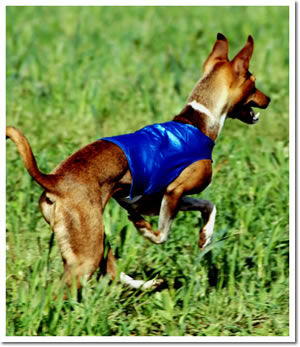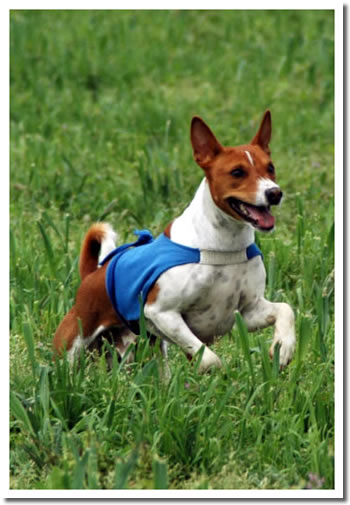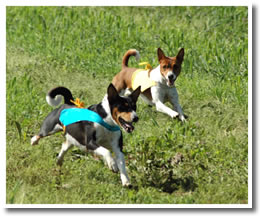|
close
window

Photographer: Shot
On Site
|
Centuries
later an English explorer rediscovered the Basenji and a pair were brought
to England in 1895 but died shortly thereafter of distemper
The
world outside of Central Africa did not hear of the Basenji until 1937,
when it was successfully introduced to England. At the same time a pair
were brought to America by Mrs. Byron Rogers of New York City, Congo
and Bois. This pair had a litter of puppies but all died of distemper
except the older male dog, Bois.
In
1941 a young female, Congo, was brought from Africa to Boston and obtained
by Alexander Phemister of Kingston, MA who also acquired Bois from Mrs.
Rogers. The pair were successfully mated and produced the first litter
raised to maturity in America.
|
|

Photographer:
Shot On Site
|
The
Basenji is a small, short haired hunting dog from Africa. It is short
backed and lightly built, appearing high on the leg compared to its length.
The wrinkled head is proudly carried on a well arched neck and the tail
is set high and curled.
The
first impression one gets of a Basenji is that he is a proud little dog,
and then one is impressed with his beauty, grace, and intelligence. In
fact, he has often been compared to a little deer.
|
|
The
Basenji's distinctive sound of happiness fairly thrills one, yet it's
a sound hard to describe. It is somewhere between a chortle and a yodel.
However, he is usually very happy when he makes it and one can't help
but share the happiness with him.
He
is, by nature, an obedient dog--tractable and eager to please.
|
 Photographer: Shot
On Site
Photographer: Shot
On Site |
 Photographer: Shot
On Site
Photographer: Shot
On Site |
The
coat of the Basenji is one of his most beautiful features. The mixture
is silky and shines like burnished copper in the sun. In colder climates
the coat tends to become more coarse, but never loses its brilliant luster.
|
|

Photographer: Shot
On Site
He
is a fascinating, endearing fellow, full of play, yet gentle as a kitten.
His fastidious, dainty habits, such as cleaning himself all over as does
a cat, make him an ideal dog for the immaculate housekeeper.
|
The Basenji's
intelligence and courage stands proven by his continued use in his native
habitat. |

Photographer: Shot
On Site
TOP
|







